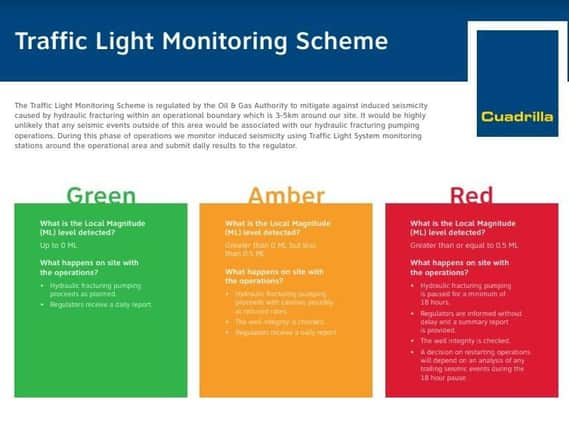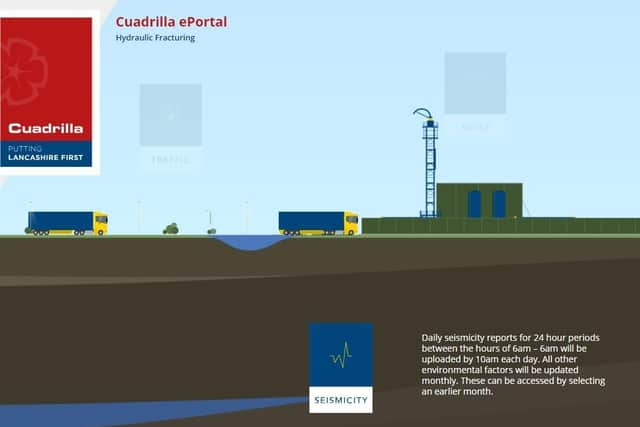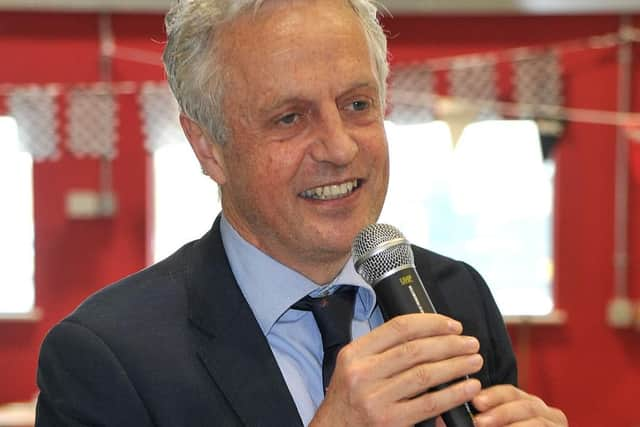Fracking firm to publish earth tremor monitoring online


The move comes as the time looms for the firm to carry out the first gas fracking in the UK since two earth tremors near Blackpool in 2011 caused the Government to call a temporary halt to fracking.
The new tool also documents incidents of naturally occurring seismicity across the North West since late 2017 and will be updated weekly.
Advertisement
Hide AdAdvertisement
Hide AdIt features a local map view so that people can look at a bird’s eye view of the operational area, which is 4.8km2 around the Preston New Road site. It will include seismicity occurring within that area, the magnitude of the seismicity and its depth.


The Oil and Gas Authority will monitor seismic events and if there is a tremor of 0.5ML (local magnitude) caused by the operation, will call a pause on fracking.
Francis Egan, executive of Cuadrilla, pictured, said: “We were the first onshore oil and gas operator in the UK to launch an ePortal last year. This has allowed the public to view the results of the very comprehensive environmental monitoring programme at our Preston New Road exploration site.
“As we prepare to carry out hydraulically fracturing of the shale rock around the site’s horizontal wells, this additional reporting will help reassure people that monitoring is in place to ensure that operations will continue to be conducted in a safe and responsible manner. In fact, the data already shows that naturally occurring seismic events of 1.5ML to 2.0ML, which are rarely felt at surface, occur relatively often across the North West.
Advertisement
Hide AdAdvertisement
Hide Ad“Once we start hydraulically fracturing our limit to temporarily pause operations, in the event of a seismic event induced by fracturing, is significantly lower, at 0.5ML, than the existing background seismic events of 1.5ML and above.”


The site can be seen at https://www.cuadrillaresourceseportal.com.
It also shows the results of a recent University of Liverpool investigation into earth movements induced by everyday human activity in the area.
Vibrations from standing 2m away from a passing tram are the same as standing above a 2.0ML seismic event and standing beneath The Big One rollercoaster is comparable to ground vibrations felt directly above a 1.8ML earthquake at a depth of 2km.
Advertisement
Hide AdAdvertisement
Hide AdDr Ben Edwards, from the university, said: “As seismic events of less than less than 1.5ML are unlikely to be widely felt, and only just felt by some people very close to the epicentre, it can be hard to comprehend what minor or micro seismicity corresponds to in terms of everyday experiences of ground motion.
"We hope that these everyday examples will help explain this”.
Cuadrilla’s Preese Hall site was blamed for the two tremors felt across the Fylde in 2011. The British Geological Survey and the Environment Agency will also be monitoring the fracking operation at the site near Little Plumpton.
Drilling equipment has been removed from the site after having made two horizontal wells.
Advertisement
Hide AdAdvertisement
Hide AdFracking equipment was brought in last week and hydraulic fracturing, injection of water, sand and chemicals into the shale to release gas, will start this month.
A spokesman for Preston New Road Action Group, which opposes fracking said: “It is good that the seismicity around the site is being monitored, but we know that we live in a naturally faulted area that is more susceptible to seismic movement.
“Once a seismic event has been triggered it is difficult to see how it will be stopped.
“Given that we know that fracking has caused earthquakes both here and in other countries we remain concerned for the safety of people and their homes.”